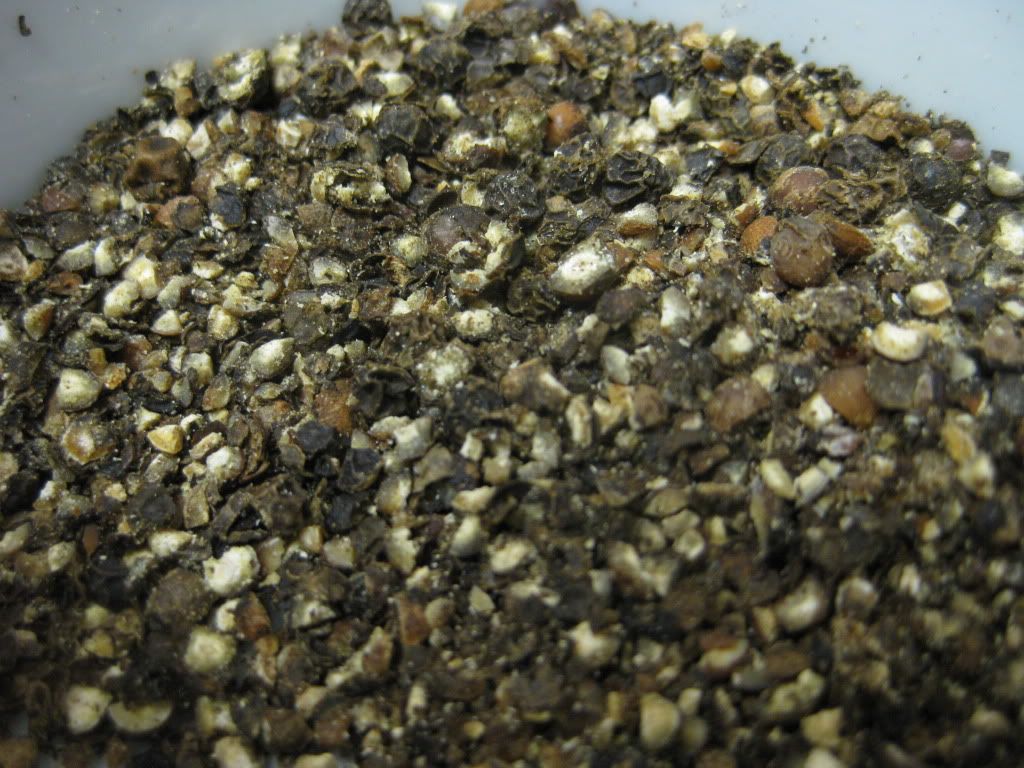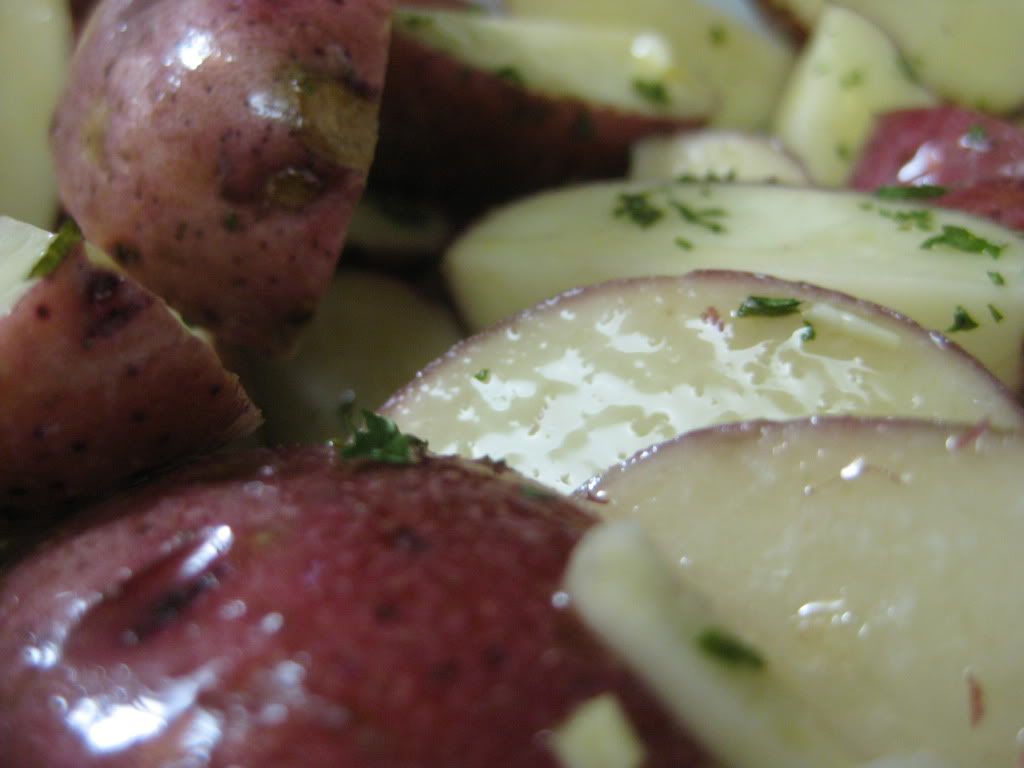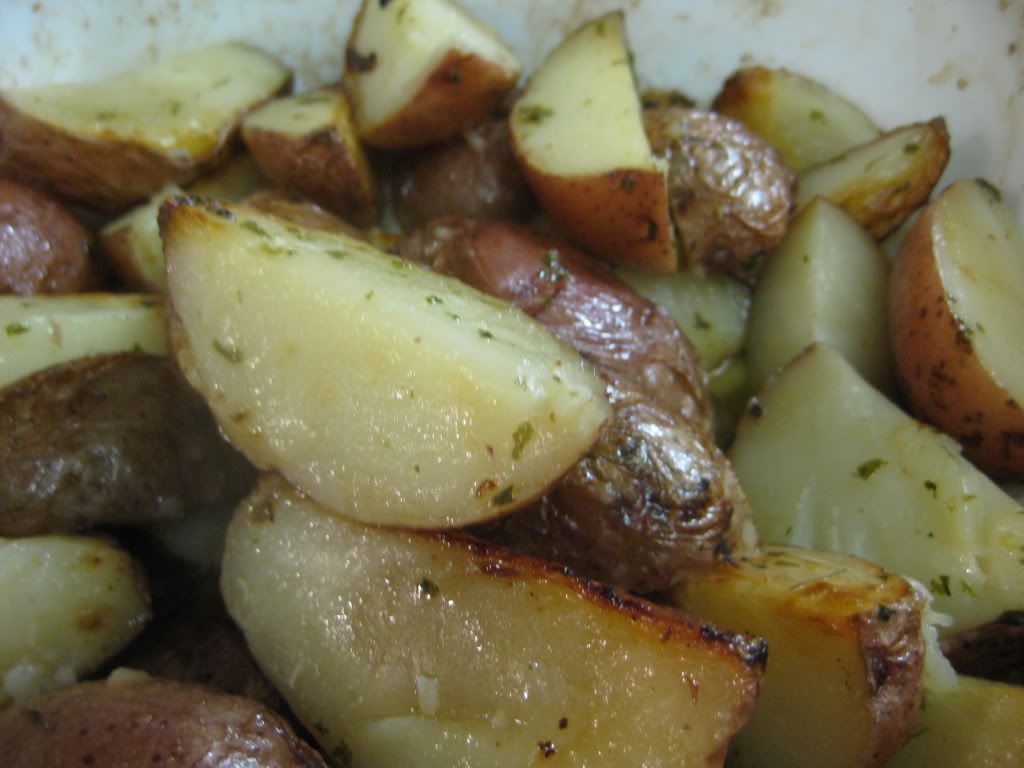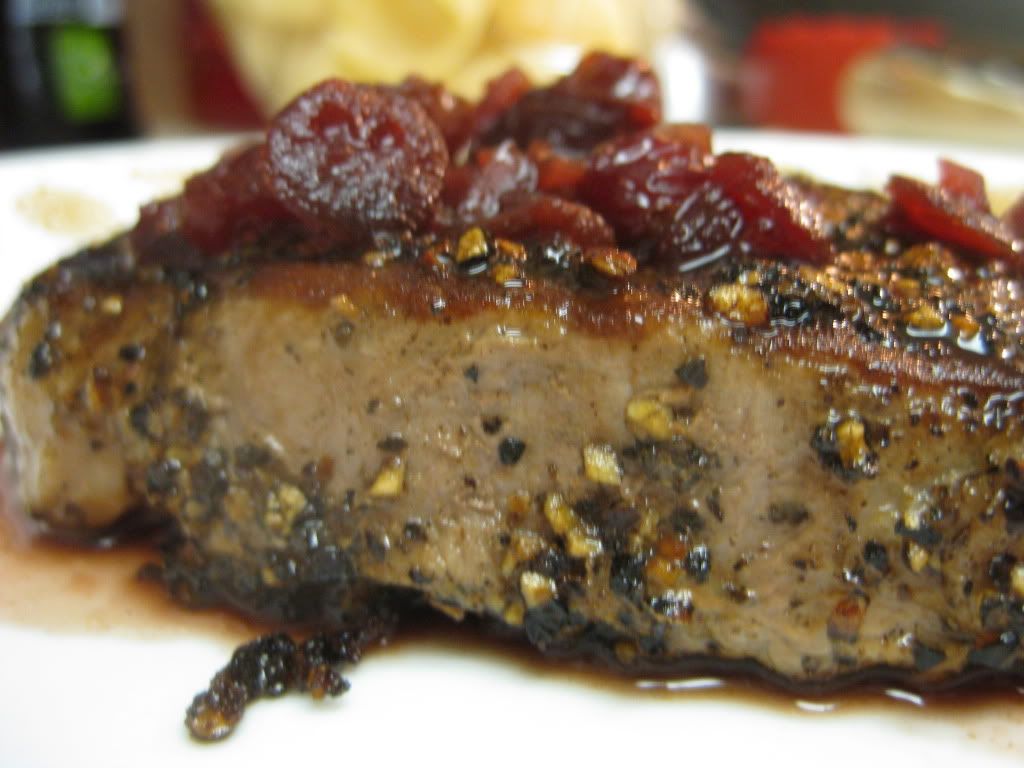Yes, tucked away in our box of goodies was two filet mignon steaks. Filet mignon, for those who are not aware is taken from the smaller part of the tenderloin in beef. The meat runs along the portion of the spine and is incredibly tender and soft because it is a non weight bearing muscle with no connective tissue. The standard cow only has about 4 to 6 pounds of actual filet mignon, so this cut of beef can be very expensive.
Filet mignon is famous in the culinary world for its incredibly soft texture and amazing moisture level. Oddly enough, this highly coveted piece of steak is actually one of the more subdued (flavor wise) cuts. It has a very mild, almost hidden beefy flavor that can lead to an underwhelming dish if handled incorrectly. Luckily, the fine folks at America's Test Kitchen have devised a way to coax out this great steak flavor.
The Recipe: Pepper Crusted Filet Mignon With Port-Cherry Reduction
Original Recipe Found In: The Complete America's Test Kitchen Cookbook
What You'll Need:
5 Tablespoons Black Peppercorns (Cracked)*
5 Tablespoons Plus 2 Teaspoons Olive Oil
1 1/2 Teaspoon Table Salt
4 Center-Cut Filet Mignon (Dried with paper towels to remove surface moisture)
For The Port-Cherry Reduction
1 1/2 Cups Port**
1/2 Cup Balsamic Vinegar
1/2 Cup Dried Tart Cherries
1 Large Shallot (Minced)
2 Sprigs Fresh Thyme
1 Tablespoon Unsalted Butter
* Cracked peppercorns are different than standard pepper mill ground peppercorns. While you can use freshly ground pepper in a pinch, there is better flavor to be had in cracking whole peppercorns yourself for this recipe. To crack the peppercorns, simply spoon the 5 tablespoons of whole black peppercorns into a tin foil pouch. Seal the pouch tightly and place it on a cutting board. Using a meat tenderizer, whack the pouch a few times to break the peppercorns down into a coarse mixture. Alternatively, you can use a pestle and mortar to grind the peppercorns by hand. Or, (if you're feeling especially lazy), a spice grinder works well too.
I attempted all three methods and found the meat tenderizer to be the least effective. The pestle and mortar worked the best - but there was a lot of effort involved. In the end, the lazy way wins. A spice grinder is the easiest way to go here.
** Be sure to use a port wine here rather than a sherry. Port is a sweeter wine, which is necessary for this dish. We're creating a sauce to compliment the filet while cutting some of the potency of the peppercorn, so a sweet red wine or port is crucial to this task.
If you haven't already deduced from the ingredient list, the solution to coaxing out the most flavor from the filet is to create a black peppercorn breading. Black peppercorn greatly compliments the natural flavors of the beef and actually kicks the flavors up a notch - creating a great beefy burst of flavor. Other methods for filet mignon include puff pastry or bacon wraps, but they compensate for the lack of natural flavor by covering it with another texture or flavor. I was partial to the concept of black peppercorns because they will enhance the natural flavor of the filet, rather than hide it under another flavor.
However, there is one obvious problem in creating a breading using black peppercorns. If left alone, the flavor is going to be really intense and almost overwhelmingly spicy. So, how do we balance creating a flavorful breading without overwhelming the dish? It's actually easier than one might imagine.
The first step to creating a the peppercorn crust is to reduce the natural heat of the peppercorns. Add the peppercorns and 5 tablespoons of olive oil to a small saucepan and warm over low heat until light bubbles begin to form. Continue to cook the peppercorns at a very light simmer for 7 to 10 minutes, making sure to swirl the pan occasionally to encourage even cooking. The original recipe states to cook the peppercorns until they become fragrant, however, they are fairly potent right away - so sticking to a 7 to 10 minute clock is easier here.
Remove the saucepan form the heat and allow the mixture come to room temperature. Once at room temperature, stir in the salt and spread the peppercorn mixture evenly across all of the steaks. Next, tightly wrap each filet in plastic wrap, pressing down on the them to work the peppercorns into the steak, and allow the steaks to rest 1 hour at room temperature.
While the steaks are resting, you can begin to make the port cherry reduction. In a small saucepan, combine the port, vinegar, shallot, cherries and thyme and place over medium heat. Allow the mixture to simmer until it reduces to about 1/2 cup of total liquid. This should take about 30 minutes. Once properly reduced, remove the pan from heat, cover, and set aside.
When the hour is almost up, preheat your oven to 450 degrees and place a rimmed baking sheet on the top rack. Meanwhile, add 2 teaspoons of olive oil to a large (12 inch) non stick skillet and place the skillet on medium high heat. Heat the oil until it begins to lightly smoke (you'll see thin trails of smoke rising from the skillet). Add the filets to the skillet and allow them to cook, undisturbed, for 3 to 5 minutes or until a nice golden crust has formed on one side of the filet. Flip the filets and allow them to cook for an additional 3 minutes to create a nice brown crust on the other side as well.
Next, transfer the filets to the rimmed baking sheet and allow them to cook in the oven for 3 to 5 minutes to bring the center of the filet to 120 degrees for rare, 5 to 7 minutes to bring the center of the filets to 125 degrees for medium rare or 7 to 9 minutes to bring the center of the filets to 130 degrees for medium. Finally, transfer the filets to a wire rack and tent them loosely with foil. Allow them to rest for 10 minutes before serving.
While the steaks are resting, return the saucepan with the port cherry reduction to medium heat. Fish out the thyme sprigs and bring the mixture to a light simmer. Remove the sauce from heat and whisk the butter into the sauce until it is completely melted. Serve the sauce over the steaks and enjoy!
Alongside this dish, I decided to cook up a few red potatoes. Luckily, red potatoes are so easy to roast, you can easily throw them alongside any dish and make any modifications you'd like. For our version of this side dish, I opted to use:
2 Pounds Red Potatoes
1 Minced Garlic Clove
2 Tablespoons Unsalted Butter (Melted)
1 Teaspoon Salt
1 Tablespoon Lemon Juice
Pinch of Parsley
Quarter the red potatoes and toss them in a baking dish with the melted butter, minced garlic and salt. Place the covered baking dish into a 400 degree oven and allow them to roast for one hour. Be sure to stir the mixture once or twice during the cooking process to make sure everything is evenly covered. Once the potatoes are tender, add the lemon juice and toss to coat evenly. Serve and enjoy! (You can also use the microwave for this recipe, simply cook them on high for 15 to 20 minutes, add the lemon juice and serve).
The Results:
Filet mignon certainly earns its reputation as the highest quality of steak. These filets were incredibly tender and moist - they almost melt in your mouth, which is simply unheard of when it comes to steak. The peppercorn breading really did coax out a great beefy flavor without overwhelming the dish. Combined with the sweet port cherry reduction, the filet was able to shine without being overwhelmed by all of the supporting cast. The sharp bite of the peppercorn, the sweet touch of the sauce, everything worked together to create an amazing harmony for this fantastic steak. If you're ever in possession of filet mignon and are not quite sure what to do with it - you simply cannot go wrong with this recipe.
The side dish of roasted red potatoes was impressive too - especially for being an 'off the cuff' recipe that I decided on at the last minute. You simply cannot go wrong with slow roasting potatoes and adding lemon and butter. Italian herbs or even bacon would make great substitutes for the lemon in this side dish too.
That's all we have for you this week. As always, thank you for stopping in and sharing our cooking adventures with us. We're back on Monday with another edition of culinary news, until then,
~Cheers








No comments:
Post a Comment